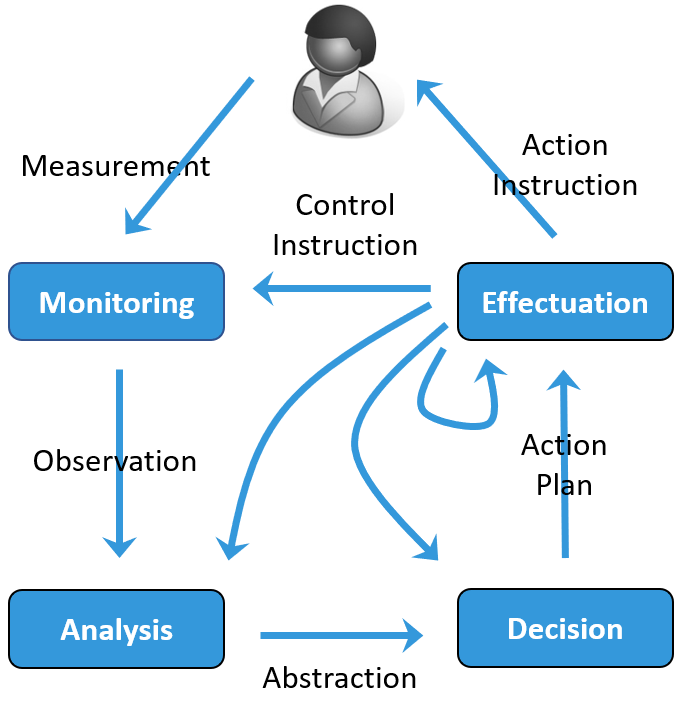The MADE Language for Guideline-based Pervasive Healthcare
My PhD aims to address some of the challenges associated with providing pervasive support to chronic patients. Pervasive healthcare systems, which aim to provide support to patients at anytime and anywhere, have much potential to address the healthcare challenges brought on by an increasing prevalence of chronic diseases, an ageing population, a growing lack of healthcare resources, etc. Indeed, continual advances in mobile hardware technologies have enabled a evolution of such from simple ones that only focus on onitoring a patient to more intelligent ones that support patients autonomously with minimal manual intervention from a care provider.
However, the use of such autonomous pervasive healthcare systems does not preclude the need to provide the best possible care to patients. In the traditional hospital setting, the quality of patient care is assured via the use of clinical guidelines, which are based on the best available evidence to optimize patient care. While these guidelines are generally written in natural language, computer languages have been developed to formalise these guidelines such that they can be executed by a guideline- based computer system. In this way, support can be seamlessly provided to clinicians in making the best possible decisions for the patient.
My PhD research aims to bring computerised clinical guidelines to the free-living setting to provide pervasive and guideline-based decision support to patients. To achieve this, the main contribution of my dissertation is a new computer language that captures the data flow in guidelines, with tasks are modelled as processes that execute in parallel. In particular, the language distinguishes between four types of processes, namely Monitoring (M), Analysis (A), Decision (D), and Effectuation (E). By parallelising the tasks in a guideline, a centralised system architecture can be avoided, allowing each component of a pervasive healthcare system (e.g. smartphone, smartwatch, etc.) to support the patient without a single point of failure. Indeed, this also opens the possibility of dynamic system re-configurations, increasing the system's resilience against factors such as evolving clinical requirements and changing communications environments.

Useful Resources
- PhD Thesis: [DOI] [PDF]
- The reference implementation of the MADE language: [GitHub]
- A small example demonstrating the MADE language: [RKT]
- The formalised version of a complete clinical guideline: [GitHub]
Related Publications
Below are a list of publications related to the MADE language that I have contributed to:
-
Guideline-based decision support for the mobile patient
incorporating data streams from a body sensor network
[IEEE]
NLS Fung, VM Jones, RGA Bults, HJ Hermens
International Conference on Wireless Mobile Communication and Healthcare, 2014 -
Application of a conceptual framework for the modelling and
execution of clinical guidelines as networks of concurrent
processes
[DOI]
NLS Fung, I Widya, T Broens, N Larburu, R Bults, E Shalom, V Jones, H Hermens
International Conference on Knowledge-Based and Intelligent Information & Engineering Systems, 2014 -
The conceptual MADE framework for pervasive and knowledge-
based decision support in telemedicine
[DOI]
NLS Fung, VM Jones, I Widya, THF Broens, N Larburu, RGA Bults, E Shalom, HJ Hermens
International Journal of Knowledge and Systems Science 7 (1), 25-39, 2016 -
The MADE reference information model for interoperable pervasive telemedicine systems
[DOI]
NLS Fung, VM Jones, HJ Hermens
Methods of information in medicine 56 (02), 180-187, 2017 -
A Verified, Executable Formalism for Resilient and Pervasive Guideline-Based Decision Support for Patients
[DOI]
NLS Fung, MJ van Sinderen, VM Jones, HJ Hermens
International Conference on Artificial Intelligence in Medicine, 2020 -
A Guideline Representation Language for Pervasive Healthcare
[DOI]
[PDF]
NLS Fung
PhD Thesis, University of Twente, 2021